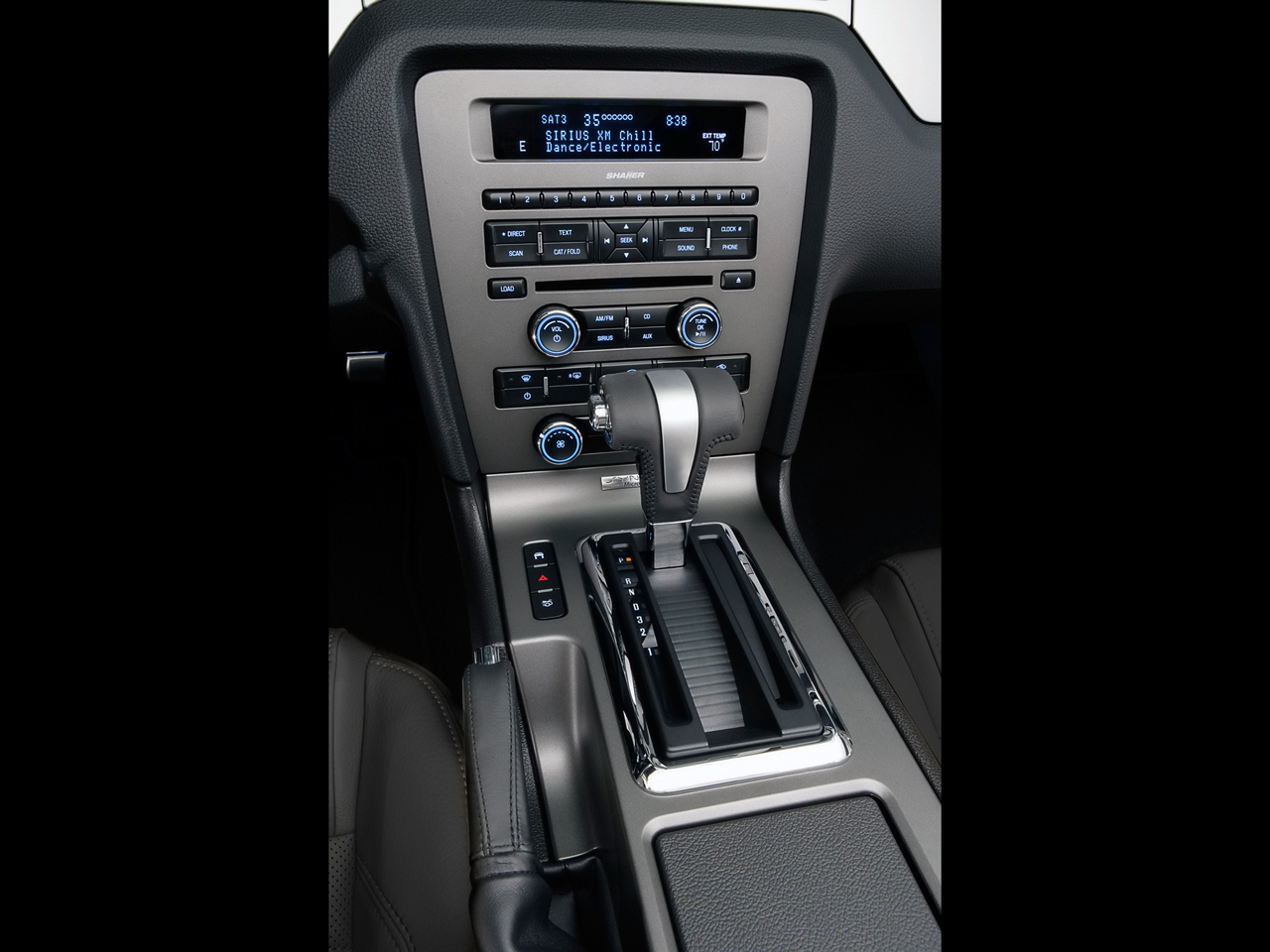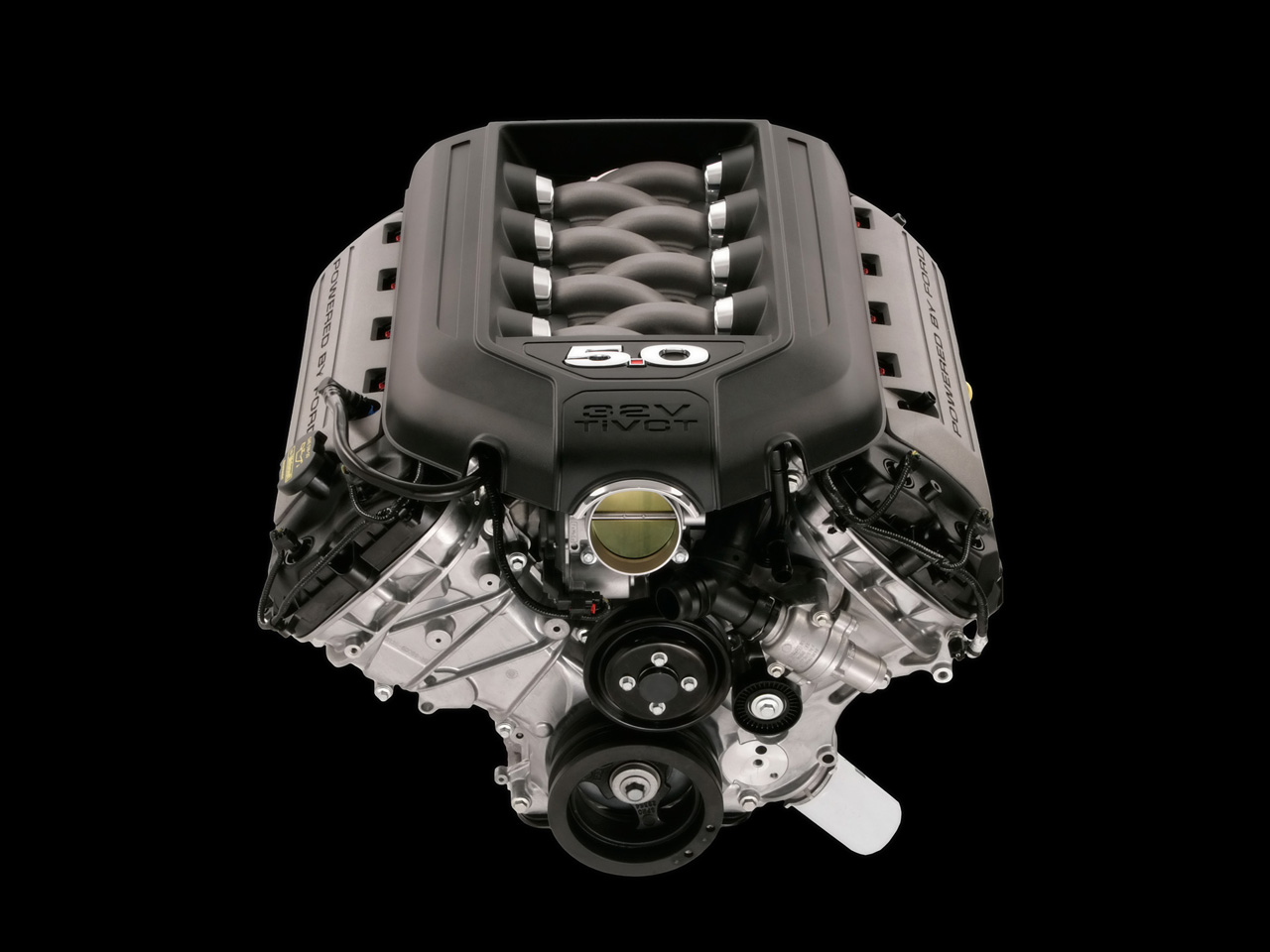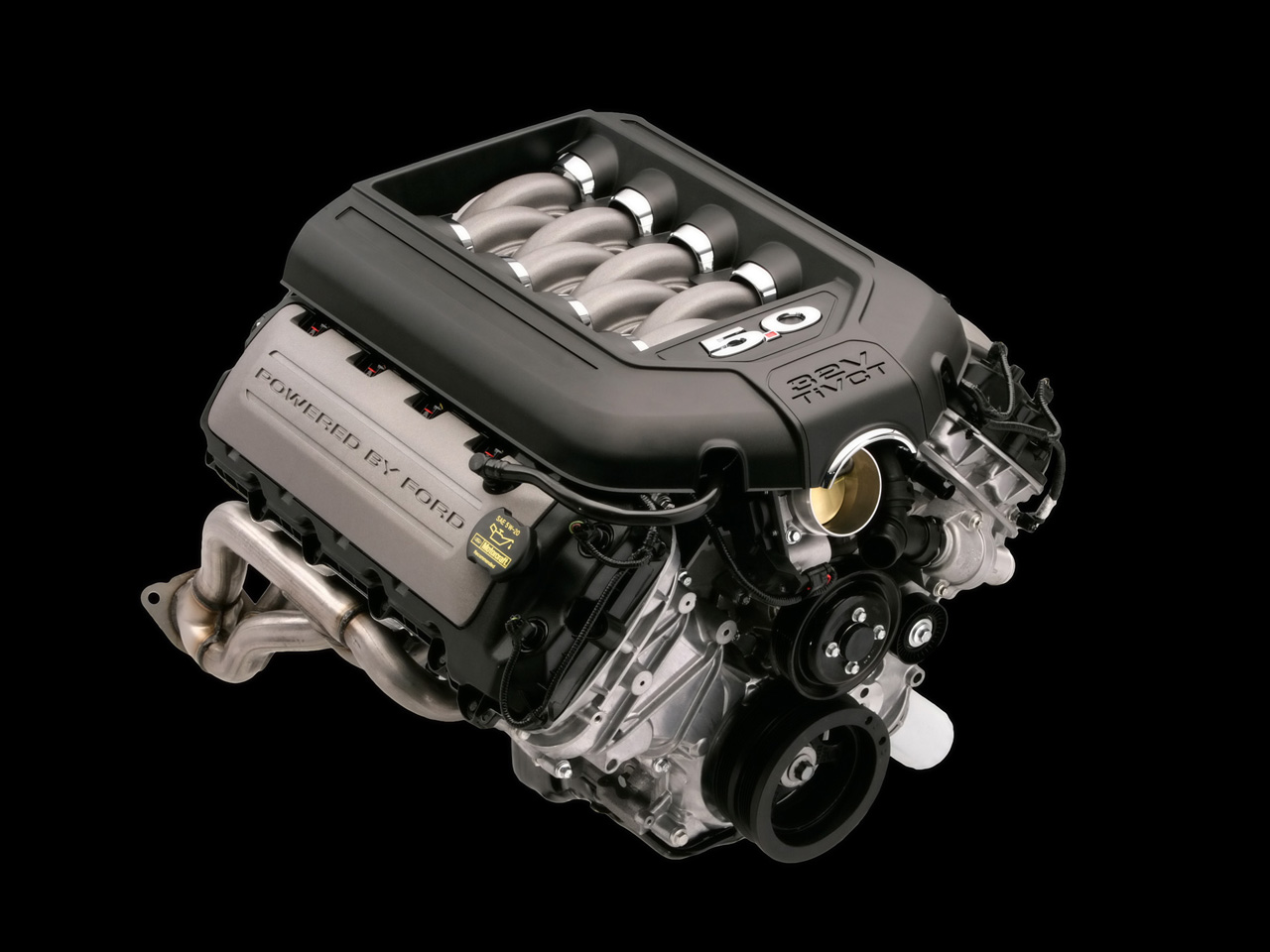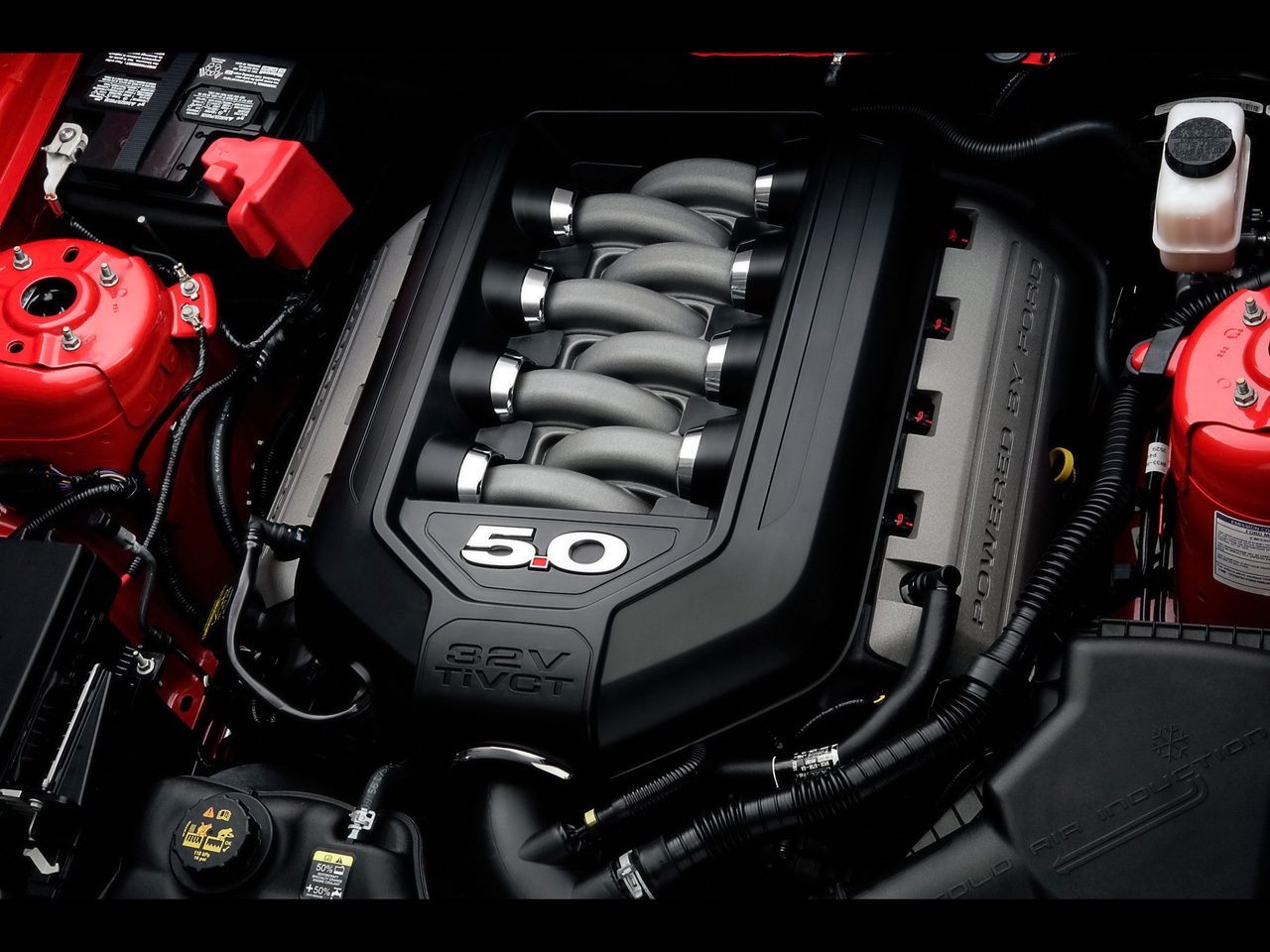2011 Ford Mustang GT
|
Price |
-- |
Production |
-- | ||
|
Engine |
5 liter V8 |
Weight |
-- | ||
|
Aspiration |
natural |
Torque |
390 lb-ft | ||
|
HP |
412 hp |
HP/Weight |
-- | ||
|
HP/Liter |
82.4 hp per liter |
1/4 mile |
-- | ||
|
0-62 mph |
-- |
Top Speed |
-- |
(from Ford Press
Release) THE 5.0-LITER IS BACK: 2011 FORD MUSTANG GT
LEADS CLASS WITH 412 HP, FUEL EFFICIENCY, CHASSIS DYNAMICS
The new Mustang GT continues Ford’s powertrain offensive with an
all-new 5.0-liter V-8, which uses advanced technology to deliver 412
horsepower and projected unsurpassed highway mileage of 25 mpg
For 2011, Mustang GT adds specially tuned Electric Power Assist Steering (EPAS), 11.5-inch front and 11.8-inch rear vented disc brakes, and an enhanced suspension featuring an improved rear lower control arm and stiffened rear stabilizer bushings
For enthusiasts, a
Brembo brake package, with larger rotors and calipers from the Ford
Shelby GT500® Mustang, unique 19-inch wheels and summer performance
tires, is offered; new fender badges herald return of the 5.0-liter
engine
DEARBORN, Mich., Dec. 28, 2009 – The 5.0 is back! The 2011 Ford
Mustang GT arrives with an all-new advanced 5.0-liter V-8 engine,
developed by a passionate cadre of enthusiastic engineers who
rallied around the common goal of delivering more than 400
horsepower.
The modern 5.0-liter four-valve Twin Independent Variable Camshaft
Timing (Ti-VCT) V-8 engine in the new Mustang GT will deliver 412
horsepower and 390 ft.-lb. of torque. At the same time, fuel economy
is projected to be better than the previous model and unsurpassed in
the segment.
“This all-new 5.0-liter engine is the next chapter in the
development of the world-class Mustang powertrain portfolio,” said
Derrick Kuzak, group vice president, Global Product Development.
“It’s a thoroughly modern engine for the times, delivering the
performance and fun-to-drive factor that enthusiasts want, while
improving fuel economy.”
Coyote in the lobby
Many of the engineers on
the development team have worked in the Engine and Electrical
Engineering Building on the Dearborn, Mich., product development
center campus. For years they walked past the original 5.0-liter V-8
Coyote Indy racing engine on display in the lobby, continually
inspired by its mix of heritage, high technology and horsepower.
The powertrain development community had long wanted to develop a
new 5.0-liter powertrain, with strategic discussions beginning in
2000. By 2007, the Mustang competitive landscape was beginning to
change, a sign that the time was right for advancing the Mustang GT
powertrain to world-class levels.
The team began 5.0-liter engine development with the objective of
delivering 400-plus horsepower, on a timetable accelerated by 12
months without compromises in reliability, durability, fuel economy,
or noise, vibration and harshness (NVH) control.
“Nearly all of the team members have worked on other high-profile
powertrain programs,” said V-8 Engine Programs Manager Mike
Harrison. “They all had a clear vision of the work required on their
particular component or subsystem. Their passion for engines, racing
and delivering every last ounce of performance throughout the engine
speed range really demonstrated that they put their heads and their
hearts into this powertrain.”
Development test engines and benchmarks included 5.0-liter blocks,
employing different bore and stroke measurements, GT500
four-valve-per-cylinder heads and cams, various intake manifold
runner configurations, differing compression ratios and a deep-sump
oil pan. The team also evaluated Ford Racing’s 5.0-liter “Cammer”
V-8 crate engine for transferable best practices.
Extensive computer-aided engineering (CAE) modeling, development
engine experimentation and evaluation in combination with intricate
machine work brought this promising, all-new configuration to
jaw-dropping life in an accelerated time frame.
The result of this development is an “and” solution, not an “or.”
2011 Mustang buyers will enjoy the benefits of a powerful engine as
well as responsible fuel economy.
Ti-VCT
A critical element in
the 5.0-liter V-8’s ability to deliver 412 horsepower, with improved
drivability, tractability and fuel economy over the 2010 Mustang GT
powertrain, is enhanced Ti-VCT.
For a high-performance application, the team specified
cam-torque-actuated variable camshaft timing. Using existing cam
torque energy, with assistance from pressurized oil, meant that
minimal upgrades to the oil pump were required, resulting in less
parasitic drag. Increased volumetric and thermal efficiency gives
faster Ti-VCT response at all engine speeds.
During the development phase, camshaft lift profile and port
optimization started with higher-lift Ford Racing aftermarket units,
modified for compatibility with various four-valve-per-cylinder
heads. Extensive CAE and dynamometer testing was performed to
fine-tune camshaft events and port flow for performance and fuel
efficiency in conjunction with the variable camshaft timing.
The resulting all-new aluminum four-valve-per-cylinder heads feature
a compact roller finger follower valvetrain layout leaving more room
for high-flow ports for free-breathing performance. Head structure
was designed to support higher cylinder head pressures and
cross-flow cooling for sustained high-rpm use. Head bolt size was
increased from 11 to 12 millimeters to contain the higher combustion
pressures.
The aluminum block was developed for optimized windage and oil
drainback under lateral conditions and high rpm, such as a track-day
outing for an enthusiastic owner and driver. Increased main bearing
bulkhead widths and nodular iron cross-bolted main bearing caps with
upsized bolts were also employed to accommodate the significant
performance increase.
An additional element is the increased capacity and baffling of the
deep-sump stamped steel oil pan to enable sustained high-rpm use and
offer the convenience of 10,000-mile oil change intervals.
Piston-cooling jets also were incorporated for performance-minded
customers and for faster oil warm-up on cold start.
Specially designed tubular exhaust headers were developed to
maximize exhaust pulse separation and improve flow. A team analyst
actually fabricated the tubular headers in his home workshop,
bringing the CAE design to life.
Performance and fuel economy
The 412 horsepower and
390 ft.-lb. of torque delivered by the 2011 Mustang GT 5.0-liter V-8
represent significant increases versus the 2010 model year output
levels.
The six-speed automatic transmission on the 2011 Mustang GT will
deliver up to an estimated 25 mpg highway and 17 in the city. This
is up from 23 mpg highway and 17 city for the 2010 model. Six-speed
manual transmission Mustang GT models for 2011 are projected to
deliver 24 mpg highway and 16 city, matching the 2010 model but
delivering significantly more horsepower and performance feel.
2011 Mustang GT fuel economy is enabled by the Ti-VCT, the six-speed
transmissions in automatic or manual variations, EPAS and an
additional rear decklid seal to enhance aerodynamics.
Fuel economy also is aided by engineering a lightweight powertrain.
The engine, as shipped, weighs just 430 pounds. This represents a
weight savings of more than 20 percent versus the previous 5.0-liter
offering. Lower mass can be attributed to the aluminum block and
heads, the lightweight composite intake manifold, composite cam
covers and hollow camshafts.
Improved driving dynamics
EPAS has made a dramatic contribution to Mustang GT driving
dynamics, delivering quicker on-center steering response, increased
effort at highway speeds and reduced effort required in low-speed
parking maneuvers. EPAS allows specific tuning for the Mustang GT
application.
The 2011 Mustang GT features an enhanced rear lower control arm to
add stiffness, improve powertrain NVH control and sharpen handling.
A stiffened rear stabilizer bar for better on-center steering is
also included. Stabilizer bar diameters, spring rates and dampers
all have been tuned for improved dynamics.
A Brembo brake package upgrade will be available for serious
enthusiasts. This package includes 14-inch vented front discs from
the GT500 Mustang, unique 19-inch alloy wheels and summer
performance tires.
Added convenience content
For 2011, Mustang GT offers drivers several new convenience technologies, including:
Standard message
center
Integrated blind spot mirrors
MyKey™ programmable vehicle key
Illuminated visors
Universal garage door opener
Sun visor storage
New look
From the 5.0 fender
badges to the new engine cover, Mustang GT honors and continues the
proud heritage of its predecessors. The speedometer increases to 160
mph and the tachometer redline advances from 6,500 to 7,000 rpm.
Three vibrant new colors will be added for 2011 including Yellow
Blaze Tri-Coat, Race Red and Ingot Silver.
Improved NVH control and convertible rigidity
For 2011, Mustang GT
benefits from across-the-board NVH improvements. These include
additional sound-deadening material on either side of the instrument
panel, an additional seal between door and rocker panel to reduce
wind noise and a real wheel arch liner to reduce noise on gravel or
wet surfaces.
Mustang GT convertible models feature enhanced structural rigidity,
with lateral stiffness improved by 12 percent versus the 2010 model.
A tower-to-tower front strut brace is now standard, and the V-brace
has been stiffened by adding gussets. The secondary crossmember also
has been stiffened while a front Z-brace has been added, connecting
primary and secondary crossmembers. A-pillar stiffening foam also
has been added to increase rigidity.
“This powertrain honors Mustang’s heritage by raising the bar on
performance while increasing fuel economy,” said Barb Samardzich,
vice president, Powertrain Development. “For enthusiasts, such as
the passionate members of the 5.0-liter V-8 team, it’s like having
your cake and eating it, too.”



